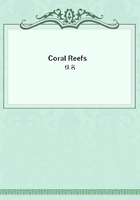
第92章
The form of the banks and islands is most singular in the part just referred to, namely, from latitude 15 deg to 17 deg, where the sea deepens quite gradually: the DHALAC group, on the western coast, is surrounded by an intricate archipelago of islets and shoals; the main island is very irregularly shaped, and it includes a bay seven miles long, by four across, in which no bottom was found with 252 feet: there is only one entrance into this bay, half a mile wide, and with an island in front of it. The submerged banks on the eastern coast, within the same latitudes, round FARSAN Island, are, likewise, penetrated by many narrow creeks of deep water; one is twelve miles long, in the form of a hatchet, in which, close to its broad upper end, soundings were not struck with 360 feet, and its entrance is only half a mile wide: in another creek of the same nature, but even with a more irregular outline, there was no bottom with 480 feet.
The island of Farsan, itself, has as singular a form as any of its surrounding banks. The bottom of the sea round the Dhalac and Farsan Islands consists chiefly of sand and agglutinated fragments, but, in the deep and narrow creeks, it consists of mud; the islands themselves consist of thin, horizontally stratified, modern tertiary beds, containing but little broken coral (Ruppell, "Reise in Abyssinie," Band. i., S. 247.), their shores are fringed by living coral-reefs.
From the account given by Ruppell (Ibid., S. 245.) of the manner in which Dhalac has been rent by fissures, the opposite sides of which have been unequally elevated (in one instance to the amount of fifty feet), it seems probable that its irregular form, as well as probably that of Farsan, may have been partly caused by unequal elevations; but, considering the general form of the banks, and of the deep-water creeks, together with the composition of the land, I think their configuration is more probably due in great part to strong currents having drifted sediment over an uneven bottom: it is almost certain that their form cannot be attributed to the growth of coral. Whatever may have been the precise origin of the Dhalac and Farsan Archipelagoes, the greater number of the banks on the eastern side of the Red Sea seem to have originated through nearly similar means.
I judge of this from their similarity in configuration (in proof of which I may instance a bank on the east coast in latitude 22 deg; and although it is true that the northern banks generally have a less complicated outline), and from their similarity in composition, as may be observed in their upraised portions. The depth within the banks northward of latitude 17 deg, is usually greater, and their outer sides shelve more abruptly (circumstances which seem to go together) than in the Dhalac and Farsan Archipelagoes; but this might easily have been caused by a difference in the action of the currents during their formation: moreover, the greater quantity of living coral, which, according to Captain Moresby, exists on the northern banks, would tend to give them steeper margins.
From this account, brief and imperfect as it is, we can see that the great chain of banks on the eastern coast, and on the western side in the southern portion, differ greatly from true barrier-reefs wholly formed by the growth of coral. It is indeed the direct conclusion of Ehrenberg ("Uber die," etc., pages 45 and 51), that they are connected in their origin quite secondarily with the growth of coral; and he remarks that the islands off the coast of Norway, if worn down level with the sea, and merely coated with living coral, would present a nearly similar appearance.
I cannot, however, avoid suspecting, from information given me by Dr.
Malcolmson and Captain Moresby, that Ehrenberg has rather under-rated the influence of corals, in some places at least, on the formation of the tertiary deposits of the Red Sea.
THE WEST COAST OF THE RED SEA BETWEEN LATITUDE 19 DEG AND 22 DEG.
There are, in this space, reefs, which, if I had known nothing of those in other parts of the Red Sea, I should unhesitatingly have considered as barrier-reefs; and, after deliberation, I have come to the same conclusion.